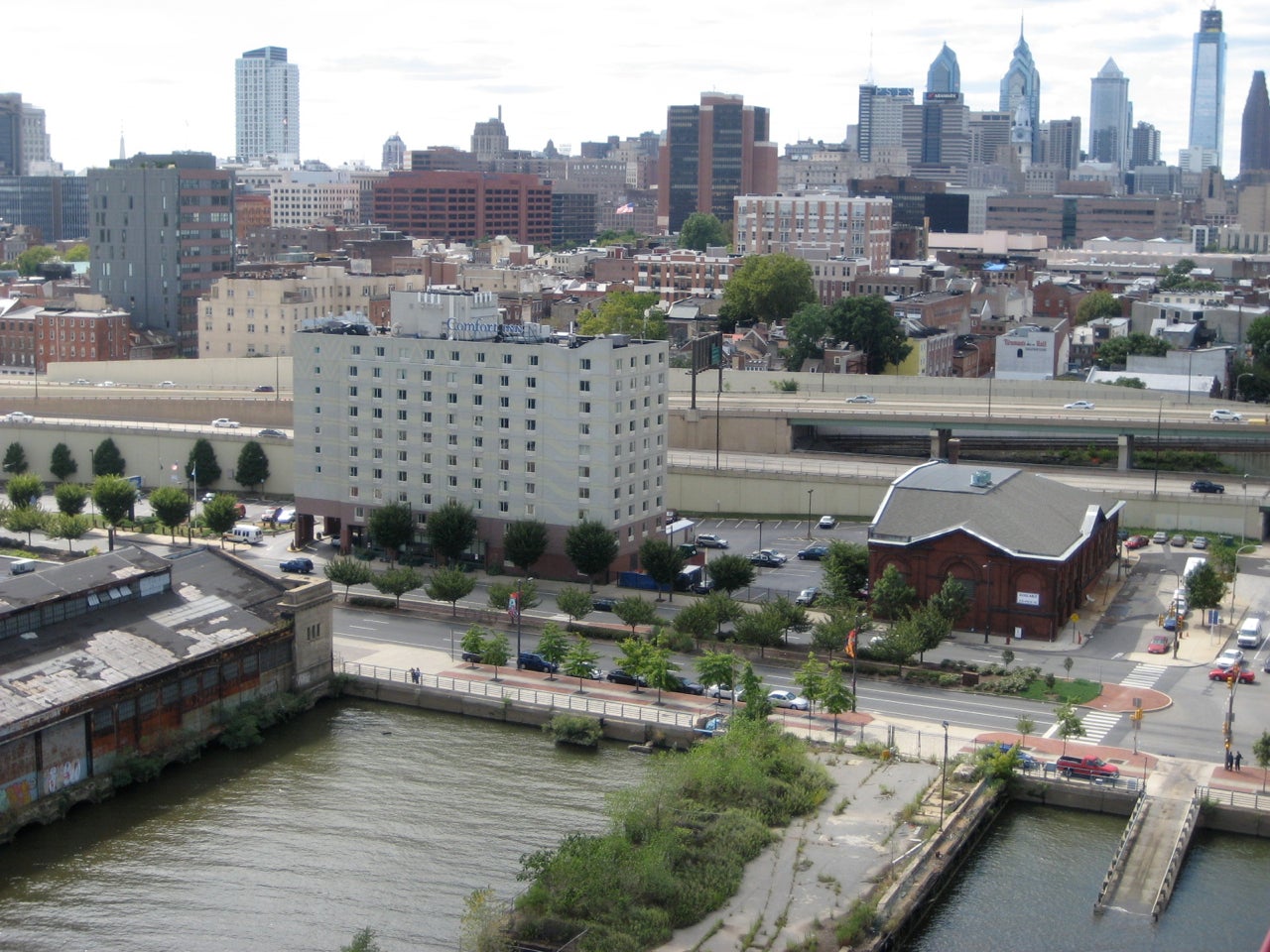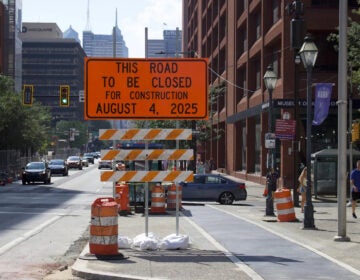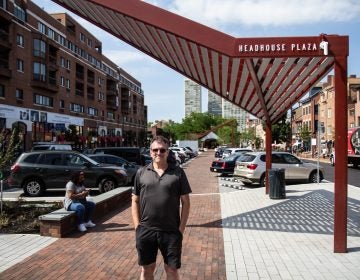What’s up with Central Delaware overlay?

Mar. 9
By Kellie Patrick Gates
For PlanPhilly
Neither the advocates for a long-range plan to reconnect the city to its river nor the owners of riverfront property are pleased with zoning legislation recently proposed by First District Councilman Frank DiCicco – despite the fact that DiCicco’s office sent both sides several versions of the legislation for comment before it was introduced to City Council last week.
The property owners believe DiCicco’s proposal is too closely aligned with the Penn Praxis Action Plan for the Central Delaware. They think the required waterfront right-of-way of 50 to 100 feet is too big a chunk for some parcels, and that too many details of what can be built where would be left to the City Planning Commission. They believe that leaves current and prospective land owners uncertain about what they can do with their property.
Action Plan for the Central Delaware advocates say the zoning overlay does not come close enough to outlining how the city can achieve waterfront goals set after more than a year and a half of visioning exercises and community input. They say the proposal would allow uses that could prevent the city from ever reaching its long-term waterfront goals – including parking garages on the west side of Delaware Avenue and Columbus Boulevard. And they say the 50-foot minimum right-of-way is actually 50 feet short of adequate.
“The overlay as currently written does not meet the do-no-harm test, which we called for in the Action Plan last June – that any overlay and any movement from here on out, should not preclude us from reaching the final vision as expressed,” said Harris Steinberg, executive director of Penn Praxis.
Craig Schelter, executive director of Development Workshop Inc. – a non-profit whose mission is to promote real estate development in the city – said the zoning proposal would make Philadelphia’s waterfront less attractive to developers who might want to build residences or businesses there.
There’s one thing both sides seem to agree on.
As Schelter put it: “The legislation isn’t ready for prime time yet.”
He said there needs to be input from all sectors of the public before the proposal is reviewed by the Council Rules Committee, and that examination is expected to happen sometime in April. Steven Weixler, president of the Central Delaware Advisory Group – aka CDAG – said he is working with DiCicco’s office to set up a public meeting.
Brian Abernathy, DiCicco’s director of policy and public affairs, knows the bill isn’t making anyone giddy with joy. “It does not meet all of the vision’s needs or goals, but it goes a long way forward, and balances a number of different interests,” including those of developers, property owners and business interests, he said.
“The legislation, in many different versions, was circulated to CDAG and Penn Praxis. CDAG, from my understanding, circulated it among their member organizations. They raised specific concerns and we addressed those concerns,” Abernathy said.
“Likewise, the legislation was circulated to property owners and their legal representation. They also raised specific concerns and we addressed those concerns. No one got everything they wanted but no one got nothing.”
The Civic Vision was made through an “intensely public process” that laid groundwork for large, long-term changes, so no zoning that contradicts the vision should be proposed without public discourse, Steinberg said. “The concepts have been publicly reviewed and publicly endorsed,” he said. “For changes to be made behind closed doors by the Councilman’s office is not acceptable.”
Abernathy points out that the Committee on Rules meetings are public. “We will not only invite but encourage folks to participate – the public’s voice is amazing and strong in Philadelphia and I believe we’ve proven that we listen,” Abernathy said. “If not, we certainly wouldn’t have started the civic engagement process to begin with.”
It was DiCicco who first talked to Mayor John Street about creating a planning process for the Central Delaware. Street then asked Penn Praxis to lead the public process that led to the Vision and Action Plan.
CDAG’s Weixler declined to detail specific concerns until after the group’s upcoming meeting, 8 a.m. Wednesday in the community room at Society Hill Towers, at which time DiCicco will discuss the overlay proposal. The room can accommodate only a few people more than CDAG membership.
In addition to the smaller right-of-way and parking issues, Steinberg said he was concerned that the overlay would create a “street edge that was not consistent” because it allows portions of buildings to be set back far enough to accommodate car turn-offs.
He also questions the boundaries of the area covered by the zoning overlay. The way the legislation is currently written, it would apply only to land east of Delaware or Columbus. But Delaware Avenue ends prior to the Central Delaware’s northern boundary, and two huge parcels – the Conrail site and the proposed Pinnacle Casino site – would be left out.
(Abernathy said the legislation is meant for the entire Central Delaware, and the error that seems to cut out two sites will be fixed in committee.)
“All of these things can nibble significantly on the edges, if not at the heart of the Vision,” Steinberg said.
Steinberg also said there should be more in the legislation to help people get to the river’s edge, including a requirement for regularly spaced access points – even if that means multiple entries for larger parcels.
“The legislation, in my opinion, provides significant freedom to the Commission to provide additional access points,” Abernathy said. “But should Council or the City require a street through the middle of a property, we will be effectuating a public taking. At this point in time, the city can’t afford to reimburse the property owners.”
Abernathy also said that legislating access points could keep a great development from happening. “What if a developer proposes a wonderful development on the river – everyone loves it. But that developer can’t provide access through the center of their property and maintain the feasibility of their project. Should we scrap the project and maintain a vacant parcel? Harris might say yes. We disagree.”
Steinberg says some exceptions likely would need to be made to the 100-foot variance the Action Plan calls for – and the Planning Commission could grant them. But the zoning legislation should set the higher standard.
Schelter thinks the current amount of access points called for could be too many. He’s not keen on all access being 24-7, either, saying in some areas, that could be dangerous. In cities like New York, where there’s lots of riverfront access, the land is largely publicly owned, he said. His organization’s members are concerned about who will be responsible for maintaining the areas accessible to the public – and who will be liable if someone gets hurt.
“Does the public need to go to the end of every pier?” he asked. Philadelphians have plenty of access to the Schuylkill and parts of the Delaware – plus huge natural areas in Fairmount Park, he said.
DiCicco’s proposal would cloud what property owners can do with their own land, Schelter said. “There would no longer be as-of-right development along the Easterly side of Delaware Avenue along the seven miles of the waterfront.” That means no property owner could look up things like height, parking and setback requirements, he said.
Schelter is also concerned about the impact on the big box stores along the southern portion of this swath of riverfront – Ikea, Wal*Mart and others. “All of those uses down there are non-conforming uses. Those owners and developers might not be able to expand at all,” he said. “From a design point of view, you might not want them. But from a job production point of view and a retailing point of view, these are significant considerations I think the Planning Commission should weigh in on.”
Abernathy said that the legislation is not in its final form. In addition to the boundary fix, he said the liability and maintenance issues will certainly be addressed. Other changes are likely too, he said.
“An open dialogue involves differences in opinion,” Abernathy said, and disagreements do not mean the process was flawed.
Contact the reporter at kelliespatrick@gmail.com
WHYY is your source for fact-based, in-depth journalism and information. As a nonprofit organization, we rely on financial support from readers like you. Please give today.





